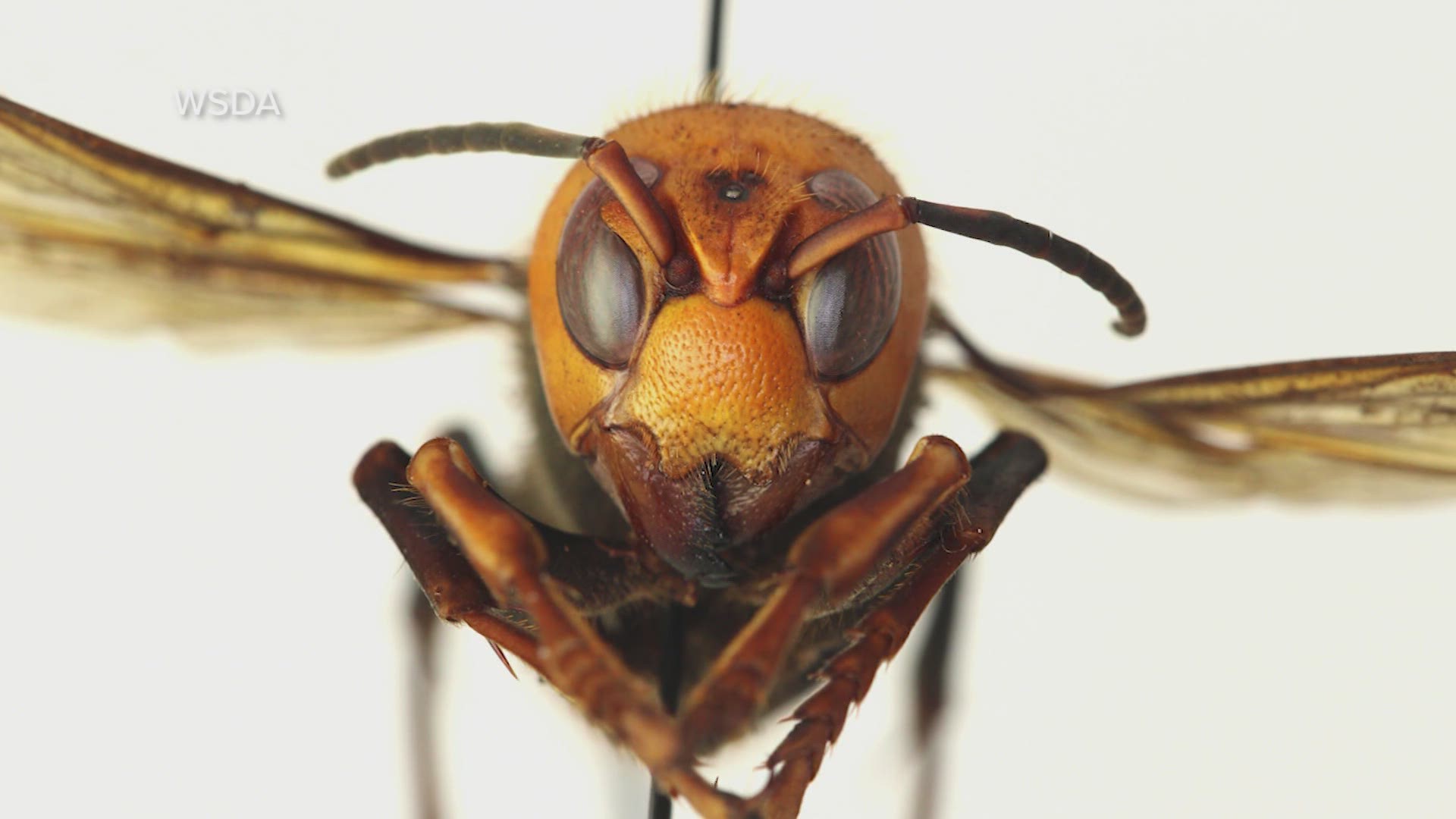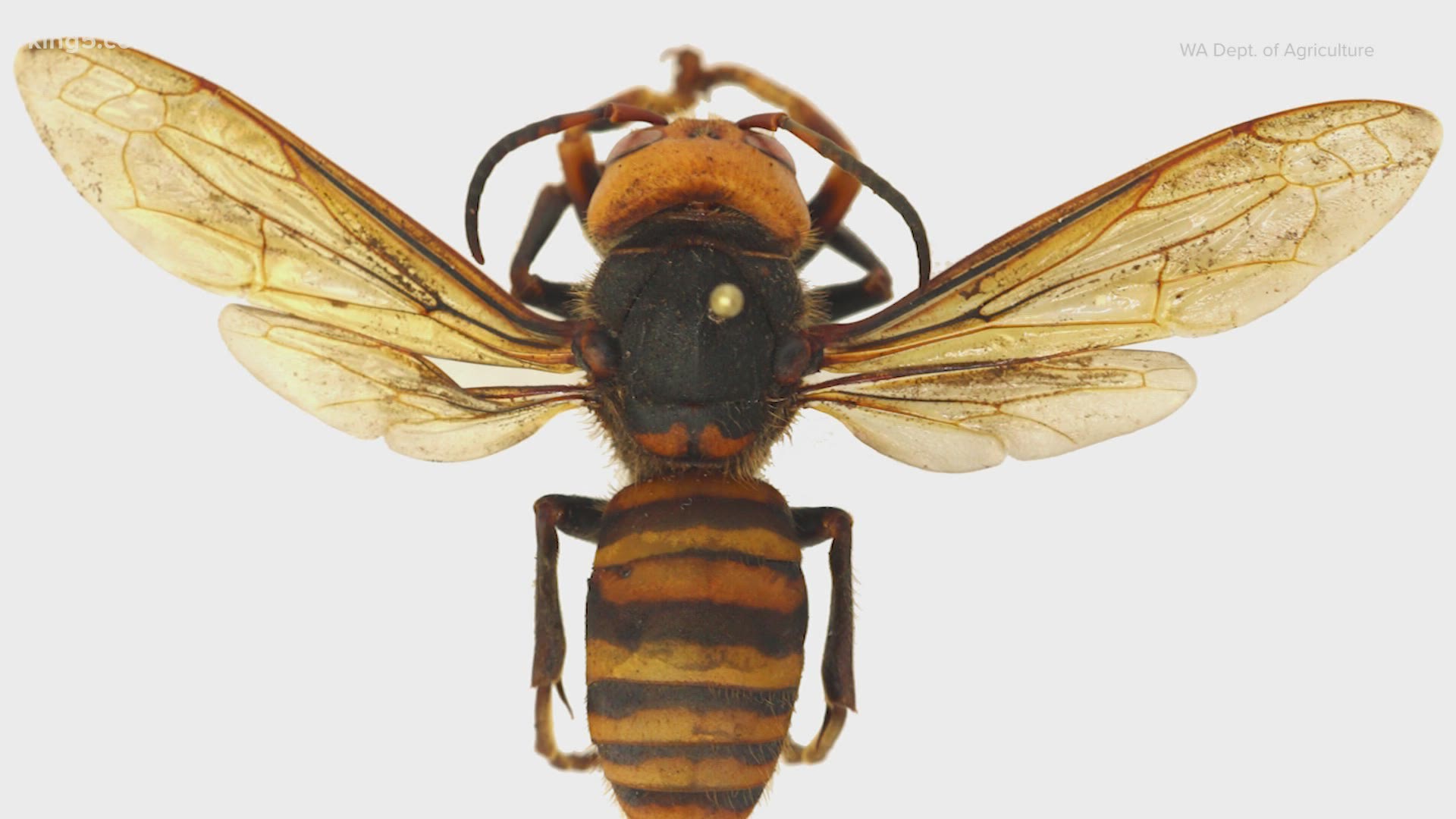BELLINGHAM, Wash. — About 600 traps to catch invasive Asian giant hornets are being placed in Whatcom County by the Washington State Department of Agriculture (WSDA), more than doubling the number already set out by citizens.
The Capital Press reports the state traps are being placed around Blaine, Custer, and Bellingham, the only places in the U.S. that the giant hornet has been found. The traps are being put on the edge of forested areas.
Asian giant hornets are brutal to pollinators, known to decapitate honey bees, and are the subject of wide fascination. Five Asian giant hornets have been found in Whatcom County since last winter.
Officials are asking the public to keep their eyes open this summer and report any Asian giant hornet sightings to the WSDA.
“When it comes to preventing and stopping a new invasive species, we all have a role to play and this is a great example,” said Justin Bush, executive coordinator of the Washington Invasive Species Council (WISC). “The first detection of Asian giant hornet in the entire United States was made by an aware member of the public. Every other detection since has been made by everyday citizens.”
Two giant hornets have been spotted in two different Washington cities this year. The WISC said Asian giant hornets aren’t expected out in larger numbers until July or August when worker hornets become more active and the queens stop leaving the nests.
The WSDA shared a tutorial showing how to make an Asian giant hornet trap for anyone interested in becoming a citizen scientist to help track the invasive species. The tutorial video shows how to create a trap at home, what bait to use, how to service the trap, and how to report the findings. However, the WSDA said the instructions are only for trapping the species within Washington state.
Anyone in Washington state can get involved with trapping the giant hornet and reporting their findings but residents of Clallam, Island, Jefferson, San Juan, Skagit, and Whatcom counties are encouraged to participate.
“The public has, and continues to, play a critical role in the response to Asian giant hornet,” said Sven Spichiger, managing entomologist for the WSDA. “We can only put up so many traps, but if people are on the lookout for them, it greatly increases our odds of finding and eradicating them.”


